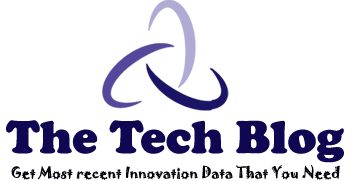Beginners Guide to Iot Connectivity
Connectivity is required for sensors to connect to other devices and translate data into action. As soon as the sensors are connected to the other devices, they need a means of transport for connectivity. There is a new category called the Internet of Things (IoT for short) and at the most basic level, it relates to connectivity as a service everyday objects with the Internet, to provide a smarter and more efficient experience to users. As the name implies, IoT refers to a connection between objects and the Internet to create products that allow users to operate devices such as computers and other smart devices.
IoT is a vast network of connected things that collect and share information. While most people connect to their smartphones or smart home devices by the Internet, the majority of IoT devices are used by businesses, factories and the healthcare industry. Any physical device connected to the Internet falls under the umbrella of the IoT.
The goal of IoT is to extend the connectivity of the Internet of Things to standard devices such as computers, mobile tablets, and even silly devices such as toasters. IoT works through a combination of wireless network technology, physical devices and advanced data analysis through cloud computing. Definition of IoT as a network of devices capable of transmitting data based on their connectivity to the Internet.
The entire IoT process starts with the devices themselves: smartphones, smartwatches, and electronic devices such as televisions and washing machines that help you communicate with IoT platforms. Learn more about smart thermostats and other smart home technologies that use Internet-connected devices to manage devices and systems.
A group of physical devices collect data from the outside world using a sensor. IoT-enabled devices, sensors and other physical objects make it possible whether to measure temperature, collect location data, track movement or communicate with people and machines. For example, IoT manufacturers can collect data on various vehicle sensors.
For objects to connect and bring the IoT to life, devices need to collect information and transmit input. The IoT works with devices that collect data and transmit input.
For consumers, IoT can refer to dozens of personal devices including smartphones, wearable technologies, fashion products and an increasing range of household appliances connected to the Internet to collect and distribute information.
IoT devices can be used to remotely monitor and create emergency notification systems for people and buildings. Just like a smartphone, various sensors, switches and other devices communicate with one thing. The IoT, as a cloud IoT platform, consists of a wide range of intelligent devices.
It is a collection of devices connected to the Internet that can communicate over the Internet without a person having to initiate communication. The IoT platforms refer to devices, sensors, and actuators, but the term “Internet” (used by Cisco) is much broader and includes devices, data and people that can be processed remotely. Although the term is not widely used, it offers a helpful way to understand the concept of the Internet of Things: instead of regarding the normal Internet as something that can be accessed from your PC or smartphone or the Internet of People, the IoT is the Internet of connected computing devices, mechanical and digital machines and objects.
It is an integral part of IoT devices, enabling them to communicate with other devices, connect with the cloud and sensors, and transfer data. The IoT connectivity is characterized by its ability to collect and share data about its environment with other electronic devices. Also, help us collect information, solve problems, and complete tasks as end-users. IoT devices collect data from their surroundings, share data with other electronic devices and help us collect data to solve problems and solve tasks as end-users.
Everyday devices such as thermostats, lamps, cars, and televisions are made smart by connecting to an Internet network. These devices are not only able to send data to the Internet, but they can also control it. Devices that can be controlled via apps or smartphones such as Alexa require an internet connection to work.
Many Internet devices are Wi-Fi devices that rely on an Internet connection and cloud services to function. Computers and tablets, by contrast, are the most important devices connected to the Internet.
Current homes Internet networks for connecting computers and other devices to the Internet are Ethernet or Wi-Fi based. Secondary devices with an area of only 3-5 m are required to bridge data over the Internet connection.
Local self-managed IoT wireless networks (LPWANs) – such as managed networks – are one of the most common IoT connectivity technologies and a great solution for connecting wireless devices to your access points or gateways in areas where there is no existing infrastructure. Compared to Wi-Fi network connections in places with high power requirements for connected devices, IoT-focused LPWAN networks are the option for the province, and you can deploy those that are designed to operate with lower bandwidth, consume less power, be fault-tolerant, and redirect network topology on the spot.


